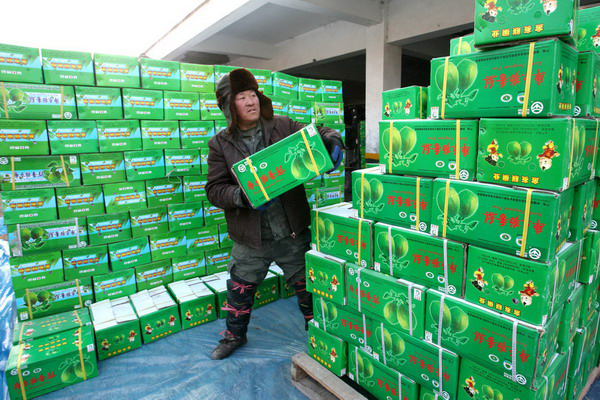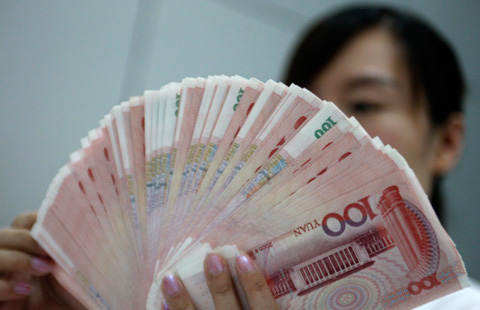China 'set for start of new growth cycle' in 2013
By Wang Xiaotian (China Daily) Updated: 2013-01-23 10:16China will see the start of a new growth cycle this year, with GDP growing by 8.5 percent, so long as it remains committed to economic reform, a report by the Bank of Communications Ltd said on Tuesday.
"Improved total factory productivity spurred by overall reform of the economic mechanism will guarantee a 7 to 8 percent growth rate for China in the next 20 years. Without such reform, it will drop to 4 percent," said Tang Jianwei, senior economist at the bank.
|
 A worker in the Xinjiang Uygur autonomous region helps load boxes of bergamot pears that have become a catch naitonwide as the Spring Festival draws near, Jan 22, 2013. [Photo / Xinhua] |
He said the nation's economic growth will slow to between 5 and 6 percent if this reform is carried out in several sectors instead of the entire economy.
The report said that, supported by an investment stimulus as the new government takes over, along with a recovery in exports and stable growth in consumption, the economy will grow faster this year than in 2012.
"Growth rate in the first and last quarters will be relatively lower compared with the second and third quarters," it said.
China saw gross domestic product growth of 7.8 percent in 2012, a 13-year low and down from 9.3 percent in 2011, according to data from the National Bureau of Statistics last week.
Tang said: "The government's fiscal deficit will be broadened to 1.2 trillion yuan ($190 billion) from last year's 800 billion yuan to support economic growth."
The report said that this year the economy might face overheating risks again, as pressure increases from inflation, rising housing prices, capital inflows and currency appreciation.
Fixed-asset investment will increase by 23 percent, faster than last year's 20.6 percent, while new yuan loans throughout the year will range between 9 and 9.5 trillion yuan, it said.
The Consumer Price Index, a main gauge of inflation, might climb by 3 to 3.5 percent from 2.6 percent last year, according to the report.
Tang said higher total demand this year will also see a substantial increase in imports, which could rise by 10 percent.
Wang Tao, head of China economic research at UBS Securities, said the credit expansion since the second half of 2012, a reviving property market and accelerated investment by local governments will see the economy continue to grow at a faster pace in the first half of the year.
"But when it comes to the second half, the central government might be more concerned over property prices, inflation and shadow banking activities, therefore, liquidity might be tightened and economic growth would be slower."
Wang said fine-tuning of the policies might come as early as April, after economic and credit data for the first quarter is released.
E Yongjian, analyst at the Bank of Communications, said: "Instead of traditional instruments such as the reserve requirement ratio for commercial banks, the central bank is likely to conduct more open market operations this year as it introduces new operations."
On Jan 18, the central bank announced the introduction of short-term liquidity operations as part of its open market operations to smooth interbank liquidity and money market interest rates.
Yao Wei, China economist at Societe Generale CIB, said: "The central bank is in the process of moving toward a price-based modern monetary policy regime, and the old policy tools, including benchmark lending and deposit rates, will be phased out."
wangxiaotian@chinadaily.com.cn
Find more in
Also about China economy
Rise in home prices recorded in most cities
GDP growth rebound will continue in 2013
Inland city set to become major economic engine
China's GDP growth eases to 7.8% in 2012
Stable Chinese economy to boost global growth- Chinese spent $180b on food and shopping during National Day holiday
- Central bank sets midpoint of yuan at weakest level in six years
- Samsung halts Galaxy Note 7 production after fire reports
- Skoda concentrates on SUVs for sales in China
- Paris auto show powered by new energy vehicle strategies
- GM throwing off cash and confident it'll keep flowing
- Parallel imports give dealers a run for their money
- Hailing apps expected to slow amid new car size regulations



















